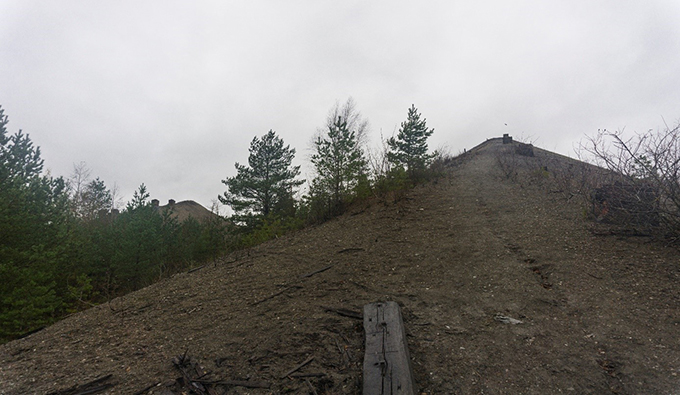
Estonia may lie a continent and an ocean away from the two biggest polluters in the world – China and the United States – but the nation cannot lay claim to climate innocence. Having mined oil shale for 100 years, Estonia now has energy independence, but it has come at a cost. Kendall Hutt investigates.
Celebrating 100 years of oil shale mining may represent a proud moment for Estonia, but this doesn’t compare to what the country has lost, many environmentalists say.
The backbone of Estonia’s electricity production may have allowed the Baltic nation to escape from beneath the Soviet yoke and become energy self-sufficient post-independence in 1991, but most observers remember that this has come at a cost: the environment.
“In terms of ecology it’s a total disaster. From the point of view of state economy this is something to be proud of,” says Professor Mait Sepp, research fellow in physical geography at the University of Tartu.
“We have lost our wetlands, we have lost our streams.”
Many of Estonia’s environmental organisations agree, with more than 15 percent (504.6 km²) of the country’s Ida-Virumaa region severely damaged by the oil shale industry.
Mihkel Annus of the Estonian Green Movement says the sector still stamps the largest ecological footprint on the nation, despite European Union (EU) regulations.
’40 years like a volcano’
Perhaps the greatest reminder of this footprint will be the country’s ash mountains, huge piles of solid hazardous waste that mar Estonia’s relatively flat landscape.
“These will probably stay as the remnants of our fossil-fuel dependent past for centuries from now, as well as the land that has been excavated and already been exhausted,” says Annus.

Harmful to the environment due to the poisonous gases and various contaminants they emit into surface and groundwater, these mountains are not only viewed as an ecological disaster.
They have also dealt a blow to the country’s pockets.
It cost the government more than 36 million euros (about NZ$44.4 million) to close the infamous ash mountain in Kohtla-Järve, which stood approximately 170m above sea level before it was closed and made environmentally safe in 2015.

Estonia’s current environmental headache is the Kukruse ash mountain, which one official from the Ida-Viru County government describes as a 40-year-old “volcano”.
Hardi Murula, head of development and planning for the county government, says they have been engaged in ongoing talks for the past three to four years on how best to “neutralise” the mountain, but that no consensus has been reached.
“No one can guarantee during the restoration process that the pollution can be stopped.”
The closure of ash mountains throughout Ida-Virumaa is largely seen as positive despite the challenges, with one of the mountains in the former oil shale town of Kiviõli converted into an adventure centre in a joint industry-government project.
Piret Väinsalu of the Estonian Fund for Nature says the restoration of land is rather impossible, however.
“You can try to restore it into something, but it will always be there as a ‘heritage of oil shale age’.”

Legacy pollution
But government, industry and environmentalists do not see eye-to-eye on the source of this environmental damage.
Minister of Environment Marko Pomerants says much of the environmental impact is related to “legacy pollution” of the Soviet-era.
“Fortunately, most of the major negative effects are a thing of the past and the current oil shale sector has remarkably reduced its harmful practices for the environment.”
He says environmental concerns today largely involve emissions, although these have decreased since 2002.
Timo Tatar, head of the Ministry of Economic Affairs and Communication’s energy department, agrees.
“Talking about environmental damage, one can say, that oil shale environmental impact has significantly decreased due to heavy investments into new combustion technologies as well as emission control.”


Official 2014 data by the European Commission shows Estonia currently stands as the second highest emitter, per capita, of greenhouse gases in Europe, however, and its far from carbon-free history occupies a blight on their climate change record.
Although the EU’s Emissions Trading System allows the country to sell-off its emissions because they are lower than the country’s massive levels at 1990, things are far from rosy, especially in the wake of the 2015 Paris climate change agreement.
In light of this, environmentalists Annus, Väinsalu, and their colleague Aleksei Lotman, a marine conservation expert with the Estonian Fund for Nature, do not share officials’ view.
Although they agree the oil shale industry is “very much less polluting” than it was 30 years ago, they say making oil shale “environmentally friendly” is not enough.
To call current improvements by the oil shale industry so is “over-optimistic to say the least”, Lotman says.
A question of commitment
They are therefore critical of industry and government and feel both have failed to act effectively.
Väinsalu, who serves as the Estonian coordinator for the international non-profit network EKOenergia in her role with the Estonian Fund for Nature, says the government does “just enough” to be on a good list for Estonia’s European partners, while it simultaneously supports oil shale interests by lobbying for greater industry exemptions.
“Instead of understanding the need to find an alternative route and exit the oil shale era our government just supports the industry in every way possible.”

Eesti Energia, Estonia’s state-owned energy enterprise, refutes such claims and says it has taken several steps to reduce the environmental impacts of its operations.
“Today we can produce more energy from oil shale than in the past with less environmental impact,” says Eesti Energia.
Eesti Energia says introductions in new technology have been responsible, although physical changes have also occurred.
Among these was the 2008 closure of the ash field at their Balti power plant near Narva, in Estonia’s east.
The project took three years to complete and resulted in 570ha being made safe for the environment.
In 2013, Eesti Energia’s sister company, Enefit, opened a 17-turbine wind park on the former ash field.
“Our main focus lies in replacing fossil fuels with cleaner fuels,” Eesti Energia says.
The company adds it already does so through its use of water, wind, and biomass.

Annus, however, as a member of one of Estonia’s most influential environmental organisations, feels industry may not have been as cooperative as it makes out.
“Whether they would make their processes more environment-friendly voluntarily, is questionable.”
He says this is because the oil shale industry has been put under increasing pressure by tightening EU regulations.
“They have been forced to take action to meet the set concentration values of emissions, changing the technology of landfilling of solid and hazardous waste, limiting water pollution, and so on.”
Annus adds much of Estonia’s oil shale industry happens behind closed doors, which further calls into question their transparency.
“A lot of the region has also been blocked off from the public eye.”

Kaja Peterson, director of the Stockholm Environment Institute Tallinn Centre’s (SEI Tallinn) climate and energy programme, says Eesti Energia has, in fact, been rather open.
“I think Eesti Energia has been very flexible because they reformed and created a new sister company, Enefit Renewable Energy.”
She points out, however, that Eesti Energia is gradually transitioning to renewables and oil shale, unfortunately, still forms the majority of their operations.
Fossil free future?
This seeming unwillingness on the part of officials to divest from oil shale has led to serious doubts about Estonia’s renewable future.
While the government and oil shale industry remain positive, environmentalists and researchers are sceptical.
They claim there is no direct investment or clear political will in renewables by the government, only some will to diversify.
“There have been measures to promote sustainable energy, but the indirect subsidies for fossil fuels have still been greater,” Annus emphasises.
Annus feels Estonia is lagging behind a large portion of their EU counterparts and trendsetters, while Tatar and Pomerants celebrate Estonia reaching its Renewable Energy Directive target – 25 percent of renewables in final energy consumption – well before the 2020 deadline.
“Since the political target has been achieved there is no political motivation to increase that,” Peterson says.

Peterson’s colleague, Lauri Tammiste, SEI Tallinn’s director, says the shift to a low-carbon economy remains on the official agenda.
He highlights plans by the government to reach 50 percent of renewables and lower CO₂ emissions by 2030, although there will be a challenge.
“The main issue is, how to actually deliver these goals and ensure successful transformation with biggest possible environmental, economic and social benefits.”
When asked whether Estonia would have a fossil free future, Sepp was adamant he would not see change in his lifetime.
“No. Not in the near future.
It’s very convenient to use this old system. You have one system which works and to build a new one …. takes a lot of money and a lot of effort. Some very critical changes must happen to change this system.”
It seems clear, for the time being at least, that Estonia’s energy future remains far more carbon intensive than environmentalists would like.
Feature article by Kendall Hutt; photos by Essi Lehto and Lukas Rusk. The assignment was part of the Inclusive Journalism Project collaboration between journalism schools in New Zealand and Scandinavia.














































